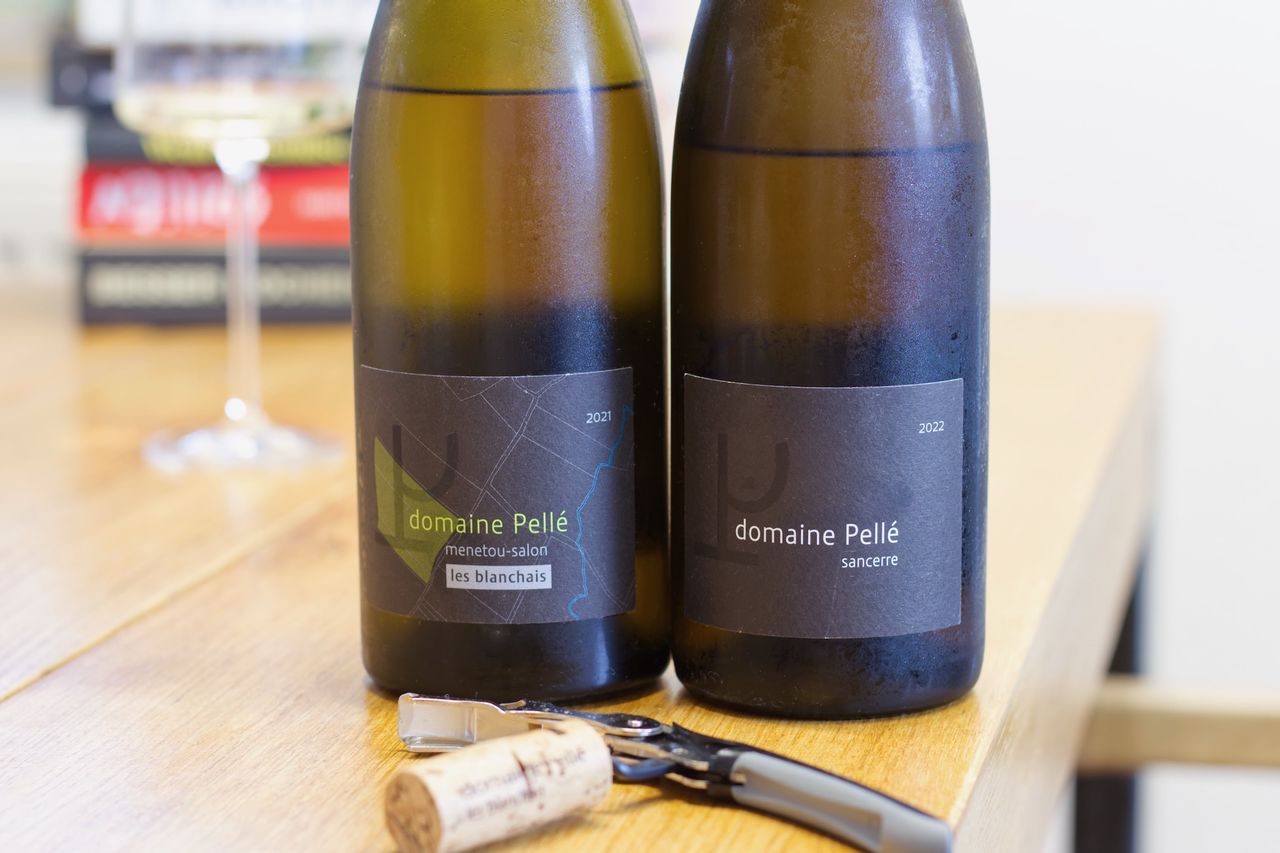Two Bottles Domaine Pellé
We drink two bottles from Domaine Pellé from the Loire region: a 2022 Sancerre La Croix au Garde and a 2021 Menetou-Salon Les Blanchais

If you squint your eyes tightly and take two steps back, you might imagine Menetou-Salon written on a wooden sign hanging over a double swing door in a saloon, just before someone flies through the window in the background. I can clearly hear the harmonica. Unlike me, though, you already knew that Menetou-Salon isn’t from some second-rate Western movie, but rather an appellation in the Loire region. More or less, anyway, as is often the case with appellations in the Loire. The appellation’s approximately 400 hectares of vineyards are located slightly southwest, adjacent to Sancerre, surrounding the town of Menetou-Salon. Incidentally, an impressive 330 kilometers as the crow flies separate the AOC Fiefs Vendéens of the last Loire bottles by the Atlantic from the vineyards of these bottles far in the east of the Loire wine region. According to route planners, that’s a bit over 400 kilometers by car, and on the Loire by boat (as close as you can get by river), it would certainly be much more. I’d say it’s quite a distance. The climatic conditions alone between the Atlantic coast and central French mainland differ enormously, and the more I see it on the map before me, the more impressed I am by the geographical spread of the vineyards in the Loire. Menetou-Salon, much like Sancerre, is a white wine region, with about three-quarters of its vineyard area planted with Sauvignon Blanc.
And, fittingly, right in front of us on the table are a bottle of Sancerre La Croix au Garde 2022 and a bottle of Menetou-Salon Les Blanchais 2021 Sauvignon Blanc. Both wines come from Domaine Pellé, which cultivates around 40 hectares of vineyards across the two appellations. The larger part is in Menetou-Salon, with a smaller share in Sancerre. All the vineyards are planted with either Sauvignon Blanc or Pinot Noir. The vines for both wines, as with almost all wines from the Domaine, grow on clay-limestone soils (with some flint in Les Blanchais) and are fully organically farmed. The La Croix au Garde is fermented in stainless steel and then aged on fine lees, primarily in steel tanks with a small proportion in large and small wooden barrels. The Les Blanchais is already fermented in a mix of wood and steel, with wood playing the main role in aging, alongside a smaller portion of stainless steel tanks.
Unfortunately, my first impression is that the La Croix au Garde bottle has taken a bit of a hit. And sadly, this feeling will not go away. It’s not quite the wet-cardboard kind of flaw, but more of a slight cellar mustiness, and what’s especially noticeable in direct comparison with the other wine, all the aromas seem somehow hidden under a veil. You can sense that there’s something there wanting to shine, but it just doesn’t. At the same time, it’s not bad enough that you couldn’t drink around it a little. I feel like drinking around a flaw is often just a way of coping because you don’t want to pour down the drain that expensive bottle of wine you’ve been looking forward to for years. But this isn’t that kind of bottle. Still, I’m quite sure this isn’t the wine it was meant to be. So just briefly: Under the veil are apple, pear, and something creamy yellow. No exotic notes, nothing green. It tastes fresh, has a pull of acidity, and also that creaminess. The more you smell it, the less mustiness there is, but it never fully disappears. Not even on the second evening. So we’ll leave it at that.
The Les Blanchais is much denser, more tightly knit, and also a bit more closed off. This is a much clearer Sauvignon Blanc with some exotic passion fruit, a bit of stone, and a green note that leans more towards gooseberry than bell pepper. And it really comes out more when drinking than when sticking your nose in the glass. There’s also a lot of energy. The wine is super taut and straightforward, and when you sip it, the passion fruit also manages to jump onto your tongue. Then comes stony minerality, only to be replaced again by fruit. It’s complex and really fine at the same time. It’s no secret that Sauvignon Blanc and I aren’t the best of friends. But when it works, it usually comes from France and tastes like this. Because this is really great.
Not much changes overnight. In fact, almost nothing at all. I’ll attribute that to what you sometimes read, that you should ideally lay this wine down in the cellar for 10 years until it really starts to show its full potential. Maybe I’ll order another bottle someday for that. This is still very fine, complex, and in perfect balance between fruit, stone, and green notes. And when you have both wines side by side on the table, you really notice that the other bottle isn’t how it should be. Day and night. All the better that the Les Blanchais is so good.
Related Posts
- Domaine Vacheron - Guigne-Chèvres 2015
- Two Bottles Les Jardins de Theseiis
- Clau de Nell - Blanc de Noir 2020